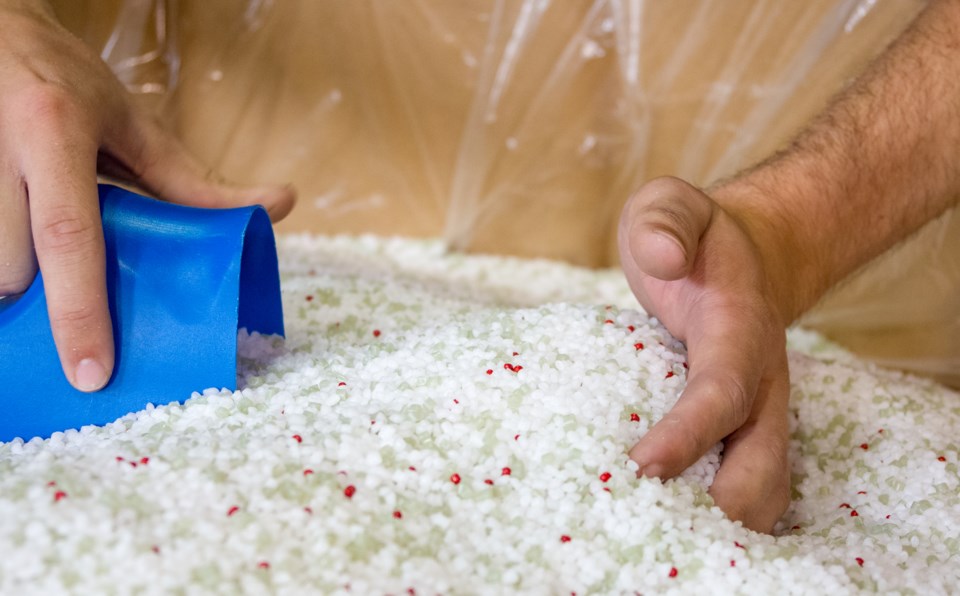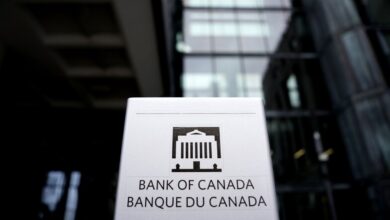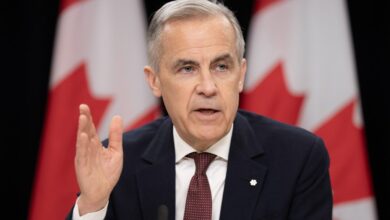BC exporters hit trade wall as US pushes CUSMA tariffs

Businesses reliant on U.S. trade seek cover under trade agreement
Many B.C. business owners are scrambling ahead of U.S. plans to levy a 35 per cent tariff starting Aug. 1 on Canadian imports that do not fall under the Canada-U.S.-Mexico (CUSMA) trade agreement.
“If we do not get certified by then we are in big trouble,” said Joyce Tang, owner of the Langley-based plastics manufacturer Newton Industries. “I would not have a business to run.”
About half of Tang’s sales are to customers in the U.S.—often parts for the construction sector, plastic shopping carts for grocers and other plastic items. That means getting her products certified as being CUSMA compliant is vital, she said.
While about 86 per cent of Canadian exports to the U.S. are expected to eventually be able to get compliant with CUSMA, and cross the border duty free, less than half of those goods are now certified as compliant with the trade agreement, according to a research note from RBC economist Salim Zanzana.
“About 38 per cent of total U.S. goods imports from Canada, valued at US$156 billion, were traded under CUSMA in 2024,” he wrote.
Most Canadian businesses that export to the U.S. are not currently certified under CUSMA because doing so has not been worth the cost, said Daniel Kiselbach, Vancouver managing partner at Miller Thomson LLP.
“There’s a fair bit of work that goes into certification,” Kiselbach told BIV. “You have got to issue certificates of origin, and you have to maintain inventory levels, understand what your bill of materials looks like and what the regional-value content is of your products,” he said.
“For many companies, they just decided that if the tariff is going to be five per cent or less, they’re not going to worry about it.”
That has changed.
Kiselbach said his firm last year might have seen a few enquiries per month seeking help to get certified under CUSMA. It now gets those enquiries daily.
Brady Gordon, a Blakes associate who specializes in trade law, also told BIV his firm is getting “multiples more” enquires around getting compliant with CUSMA.
“We’re getting a lot of questions, because businesses just want to make sure that they get it right,” he said. He added that penalties for improperly going through the process can be severe.
Many of Blakes clients import U.S. goods and want to be compliant with Canadian retaliatory tariffs; others are manufacturers shipping products stateside, Gordon said.

Kiselbach used the example of a screwdriver to illustrate the work that needs to be done to get a product certified under CUSMA.
First, the manufacturer must make sure various component parts comply with the product-specific rules of origin requirements.
The screwdriver may have some steel, some plastic and rubber on the handle. The manufacturer would have to itemize each of those components as an input, and for each input assign a value under a methodology, Kiselbach said.
“The rules of origin, much of the time, require that you have 60 per cent regional-value content,” he said. “That means you must have inputs from the CUSMA territory—from Canada, the U.S. or Mexico—that amount to 60 per cent of the cost of production.”
The next step is what Kiselbach called a “tariff shift.”
Each component part has a harmonized tariff system number, or a classification number, he said.
When the manufacturer uses the components to create the screwdriver, the components’ classification numbers disappear, and the finished product then falls into a new category with a new classification number.
Depending on the product, there might be a requirement that a certain percentage of the labour required to produce it be in a CUSMA country, or that workers making the product earn certain minimum wage.
Manufacturers must keep detailed records of these things because U.S. customs “regularly” conduct audits to ensure that products certified as being compliant with CUSMA are indeed what they claim to be, Kiselbach said.
Lawyers are usually hired to oversee the process of certification because interpreting legal provisions and categorizations of products can be tricky.
Getting compliant with CUSMA might be done in a week or a few weeks, although each situation is different, Kiselbach said. Tang told BIV she has been working on getting certified since June.
Costs to get CUSMA compliant are determined on a case-by-case basis but usually run into the thousands of dollars, if not more than $10,000, Kiselbach said.
The ongoing cost to a manufacturer exporting to the U.S. is likely to mostly be a part of internal operations. Staff would have to spend time to ensure that inputs in manufactured goods continue to qualify with rules of origin.
Given U.S. President Donald Trump’s penchant for changing his mind on tariff rates and the fact that Canada is in the process of renegotiating a trade deal with the U.S., it is possible that goods that today are compliant with CUSMA and can enter the U.S. tariff-free will not be able to benefit from that status in the future.
There are also no guarantees that Canada and the U.S. will successfully negotiate a new trade deal.
“This all adds so much uncertainty,” Tang said. “It is necessary work to do but, in my opinion, it really is unnecessary to have to do all this paperwork just to prove we are CUSMA compliant. We have 400 different products.”




